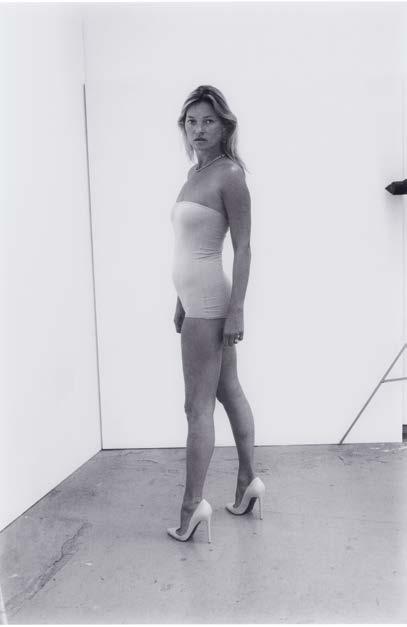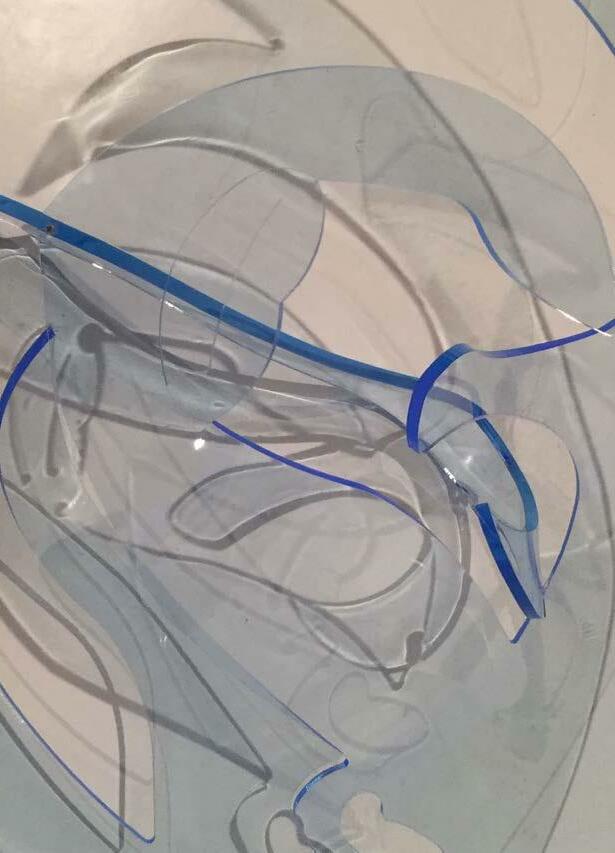Multiple Exposures






67 In the studio 82 Waitress 91 Road markings 101 Out and about 167 Pirelli
Leopard Lady
Darcey Bussell
Gold body-plate
189 Kate Moss
An image bank
Shadowland


At the end of five years at Horn sey, when you had finished your exams and sat the entrance exam to the RCA, there was a sort of lull of almost a term. A lot of students just slipped off and started their holidays early and that was the end of that. But I realised that it would be good to use the time to take advantage of facilities available in the school.
So I did a course on photography. I was given the camera and went out and took photographs. The first were taken when it was snowing at a derelict railway station on the top of Crouch Hill in Hornsey.
I used to commute to the school from the other side of London and would exit from Finsbury Park. As you were walking up the subway from the station platform to the pavement, there was a kaleido scope of light as you approached the end, which suddenly struck me as looking like the new Abstract Expressionist paintings coming from America. My use of the camera wasn’t to gather subject mat ter or as an aid for a painting. I thought that the visual phenomena were significant enough on their own. The photograph has always existed for me as a photograph.
I was conscious of the power of the photograph, its weight as an omnipresent way of seeing the world, of dealing with news and so much else, let alone movies and film stars and all the rest of it. Many students would take photo-
graphs as a means of building their compositions or to help them with a life pose, but that never much mattered to me, though I did like the inevitable thing of making col lages. This seemed to me a distinct and legitimate artistic activity, and sometimes a way of adding a frisson, another dimension to one’s abilities with the pencil. There were games to be played, includ ing with gender. I liked the idea that you could carefully cut out the heads of two models and swap them over if the pose and the situation was right. I think of the cutting of a male and a female model in wide-shouldered suits on which I switched their heads. You could play games with people’s expecta tions from the medium. This is different from the classic use of col lage, such as my dropping a cutting of Bardot into a reproduction of a Paris street scene by Utrillo.
In another instance, I gave a new dimension to something I had painted by making a print that laid this work on a photograph of Liz Taylor’s cleavage. In conjunction with the photograph I could greatly extend the implications of the original image.
That initiation at Hornsey gave me the impetus to make photo graphs as an end in themselves and also to use my own or appropriated photographic images within various mixed-media experimentations.
Opposite ‘ At the Royal College of Art’, collage, 1959

Los Angeles mannequin heads, acquired in 1978, Charterhouse Square, London, 1985







 Left Smithfield, London, 2014 Top Smithfield, London, 2014 Above Charterhouse Square, London, 2017
Left Smithfield, London, 2014 Top Smithfield, London, 2014 Above Charterhouse Square, London, 2017





 Above, opposite, and pages 192-193 Kate Moss, Charterhouse Square, London, 2013
Above, opposite, and pages 192-193 Kate Moss, Charterhouse Square, London, 2013




Photography extended the keyboard of possibilities for representing the visible world, hitherto determined by visual perception and manual dexterity.